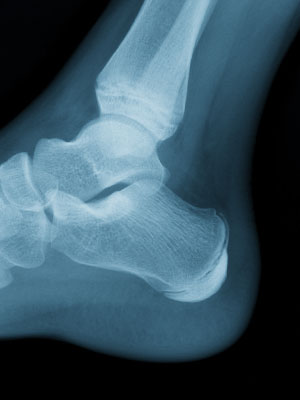
Sever’s Disease or Calcaneal apophysitis is one of the most common causes of heel pain in children and adolescents. It typically affects active children between 8 to 14 years of age. Sever’s disease is swelling and irritation of the growth plate (apophyses) in the heel (calcaneus). The growth plate is a layer of cartilage near the end of a bone where most of the bone's growth occurs. This fibro-cartilage may be at risk of injury and tends to be inflamed and painful in cases of Sever’s disease.
Risk factors include football-based sports, rapid growth spurt, activity on hard surfaces, flat arches, being overweight and ill-fitting footwear.
Patients with Sever's Disease usually present with pain or tenderness in one or both heels with no history of direct trauma. Symptoms are usually worse during or after activity and get better with rest. Pain is usually reproducible upon palpation of the insertion of the Achilles tendon on the posterior heel – the squeeze test. Imaging tests, including X-rays as seen above, are not typically used to diagnose Sever’s disease, as the growth plate is considered a normal finding in adolescents. However, we may order an X-ray to rule out other foot conditions and injuries, such as fractures.
With appropriate management, Sever's disease usually goes away within a few months and doesn't cause lasting problems.
If you are concerned your child is suffering from Sever’s disease, please feel free to book an assessment appointment with one of our podiatrists.